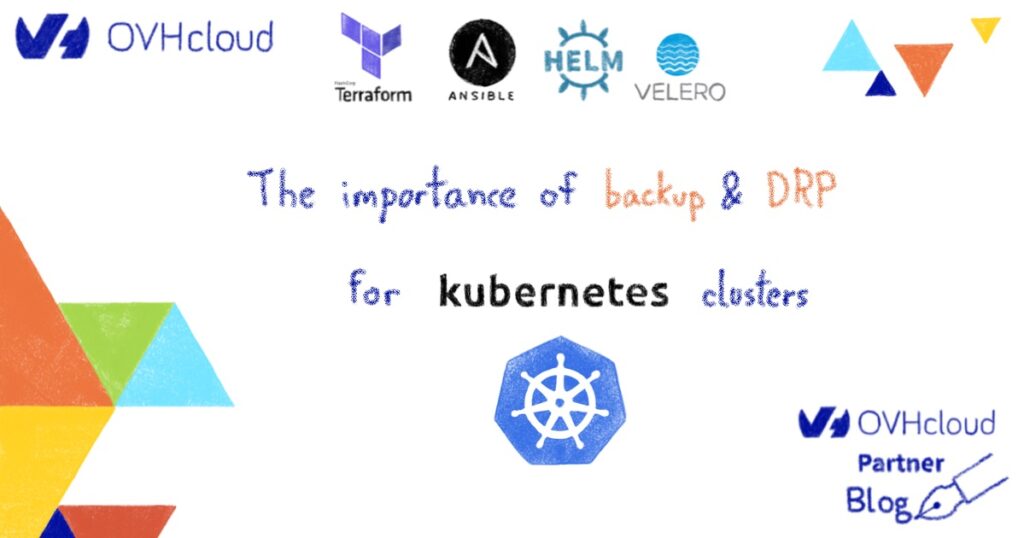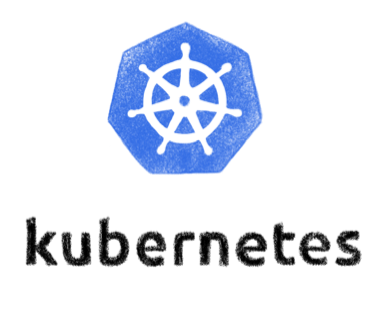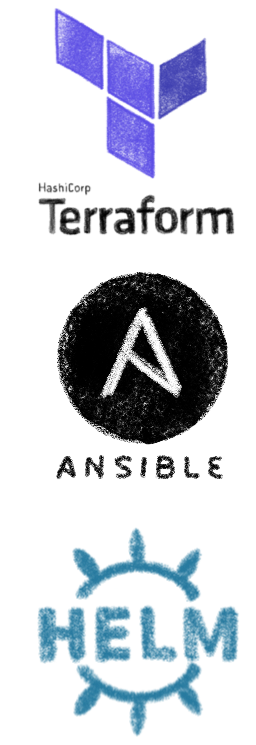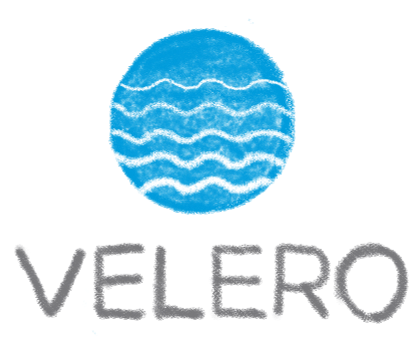The containers, in software development, have now become key elements for hosting and managing applications. The use of these containers has allowed companies to be more efficient and flexible in the deployment of their applications, thereby improving their competitiveness in the market.
Orchestration tools like Kubernetes have significantly changed the way applications are developed and deployed. They provide developers with the opportunity to focus fully on creating software, which has enabled containers to revolutionize software development. Today, containers have become key elements for hosting and managing applications, and they continue to gain popularity in the world of technology. Their use has allowed companies to gain efficiency and flexibility in deploying their applications, thus improving their competitiveness in the market.

Kubernetes has become the go-to platform for container orchestration, with more and more organizations using it for their production environments. Kubernetes provides many benefits, but it also introduces new challenges and risks. Indeed, as with any technology, Kubernetes is not immune to disasters, data loss, downtime, or infrastructure failures. Therefore, it is crucial to consider the importance of backup and disaster recovery planning (DRP) for Kubernetes clusters too.
To start with, we’ll explain why backup and DRP are critical for Kubernetes clusters, like any other type of clusters, how to implement a backup and DRP strategy, and some best practices for maintaining a healthy Kubernetes environment. Then, we’ll explore how infrastructure as code (IAC) can facilitate DRP, and why Velero Backup is an ideal tool to protect Kubernetes cluster data.
Why Backup and DRP are Critical for Kubernetes Clusters

Kubernetes clusters are complex systems that consist of multiple components and layers, such as nodes, pods, services, and etc. These components are distributed across different hosts and can be subject to failures or errors, whether caused by hardware or software issues, human errors, or even cyber-attacks. When a component fails, it can result in data loss, downtime, or degraded performance.
To avoid these risks and maintain business continuity, it’s essential to have a backup and DRP plan for your Kubernetes clusters. Here are some reasons why:
- Data protection: Kubernetes stores critical data, such as application configurations, persistent volumes, and stateful sets, in etcd. Backups ensure that your critical data is protected in case of a failure or outage.
- Disaster recovery: In case of a disaster or outage, a DRP plan helps you recover your data and applications quickly and minimize downtime.
- Compliance: Many industries and regulations ( GDPR ) require businesses to have a DRP plan to protect sensitive data and maintain business continuity.
- Risk management: A backup and DRP plan can help you identify potential risks and vulnerabilities in your Kubernetes environment and proactively mitigate them.
How to Implement a Backup and DRP Strategy for Kubernetes Clusters
Implementing a backup and DRP strategy for Kubernetes clusters involves several steps, including:
- Define your backup and DRP requirements: Identify your critical data and applications, recovery time objectives (RTOs), recovery point objectives (RPOs), and compliance requirements.
- Choose a backup and DRP solution: There are many backup and DRP solutions available for Kubernetes, such as Velero, Kubernetes Disaster Recovery (KDR), Kasten and Stash. Choose a solution that meets your requirements and integrates with your OVHcloud environment (i.e. using OVHcloud S3 object storage services ensuring full interoperability and resilience), existing tools and workflows.
- Configure and test your backup and DRP solution: Set up your backup and DRP solution and test it thoroughly to ensure it meets your RTOs and RPOs. Regularly validate and update your backup and DRP plan as your Kubernetes environment changes.
- Document and train your team: Make sure your backup and DRP plan are clear and familiar to all, and keep your team trained on how to execute it in case of a disaster or outage. Regularly review and update your plan to reflect changes in your Kubernetes environment or compliance requirements.
Infrastructure as Code (IaC) to Facilitate DRP

Infrastructure as code (IAC) is a methodology that uses code to automate the provisioning, configuration, and management of infrastructure.
With IAC, you can define your Kubernetes environment as code, using tools such as Terraform, Ansible, or Helm. This code can be version controlled, tested, and audited, making it easier to maintain, replicate, and recover your Kubernetes environment in case of a disaster or outage.
IAC can facilitate DRP by providing a consistent, repeatable, and scalable way to deploy and configure your Kubernetes environment. With IAC, you can easily rebuild your Kubernetes environment from scratch, which is especially important in case of a catastrophic failure.
In the context of a Disaster Recovery Plan (DRP), GitOps can be a particularly useful method for managing Kubernetes infrastructure. Thanks to its consistent, reproducible, and auditable approach, GitOps allows for effective control over changes and deployments in the Kubernetes environment. Additionally, by using continuous deployment practices, GitOps makes it easier to monitor and update the Kubernetes environment, which can be crucial for maintaining service availability in the event of an incident.
In case of a disaster or outage, GitOps allows for the quick recovery of the previous state of the infrastructure by using Git’s version control features. Indeed, all changes made to the infrastructure are versioned and documented, making it easier to restore the previous state. Moreover, the consistency of the infrastructure ensured by GitOps reduces the risk of human error and facilitates collaboration between operational and development teams. Overall, GitOps can be a key element in ensuring business continuity within a DRP.
Advantages of Velero Backup to Protect Kubernetes Cluster Data

Velero is an open-source tool that provides backup and disaster recovery capabilities for Kubernetes clusters. Velero offers several advantages for protecting Kubernetes cluster data, including:
- Automated backups: Velero allows you to schedule automated backups of your Kubernetes resources and their associated volumes. This means that you don’t have to manually create and manage backups, saving you time and reducing the risk of human error.
- Customizable backup policies: Velero offers flexible backup policies that enable you to customize your backups to meet your specific needs. For example, you can choose to back up only certain namespaces, labels, or annotations.
- Incremental backups: Velero performs incremental backups, which means that only the changes made since the last backup are saved. This reduces the backup window and saves storage space.
- Disaster recovery: Velero provides an easy way to restore your Kubernetes resources and their associated volumes in case of a disaster or outage. You can restore your resources to the same cluster or to a different one, making it easier to switch between different environments.
- Support for multiple cloud providers: Velero supports several cloud providers, allowing multi-cloud strategy and making it easier to use the same tool for backup and disaster recovery across different environments.
- Integration with IAC tools: Velero integrates with infrastructure as code (IAC) tools, such as Kubernetes manifests and Helm charts. This means that you can include backup and disaster recovery configurations in your IAC templates, making it easier to manage your backups alongside your infrastructure.
To ensure optimal use of Velero, it is recommended to enable Velero metrics to monitor the status of backups. Using the open-source monitoring tools Prometheus and Grafana, you can create a dedicated Kubernetes backup dashboard to display key metrics such as backup size, backup duration, number of successful and failed backups. These metrics provide useful information about the progress and success of backups, allowing for early detection of any potential issues. In addition, to improve visibility and resolution of backup issues, it is recommended to implement Loki and Promtail to retrieve logs and trigger alerts in case of warnings or errors on backups. This proactive approach helps resolve problems faster and improve the quality of backups. By following these best practices, Velero users can ensure that their backups are reliable and available when needed.
In a nutshell, Velero offers a reliable and flexible way to protect your Kubernetes cluster data, automate backups, and streamline disaster recovery.
Conclusion
Backup and DRP are critical for Kubernetes environments to ensure data protection, disaster recovery, compliance, and risk management. IAC can facilitate DRP by providing a consistent, repeatable, and scalable way to deploy and configure your Kubernetes clusters.
As highlighted above, Velero Backup is for sure a reliable and flexible solution to automate backups and streamline disaster recovery.
But there are various solutions available on the market to protect Kubernetes cluster data, and OVHcloud Managed Kubernetes offer (CNCF software compliant) is compatible with all of them by design – you can find out more in the dedicated content library available here.
If you want to get expert advice and support on this topic, we invite you to reach out to our partner LecPac-Consulting using the following contact details or to our Professional Services team.
Email info@lecpac-consulting.com
Telephone 06 13 02 81 71
Website https://lecpac-consulting.com/contact/


